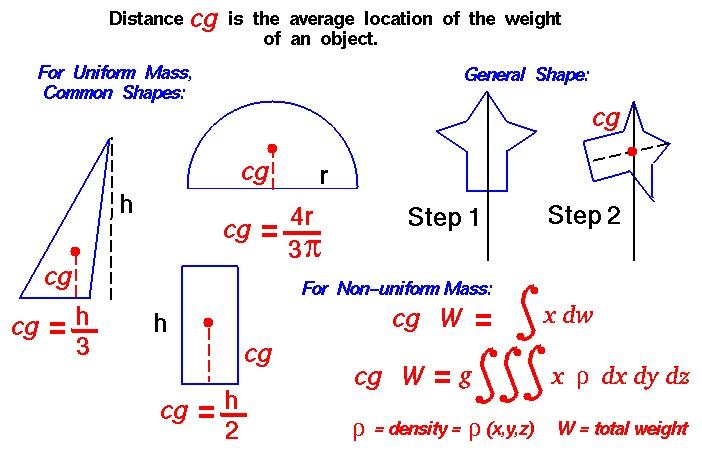In the fast-paced world of logistics, finding the perfect balance between efficiency and cost-effectiveness is crucial. One approach that has gained popularity in recent years is the Center-of-Gravity approach. This strategic method goes beyond the traditional logistics practices, focusing on the geographical center of a distribution network to optimize transport and shipping operations. Join us as we explore how this innovative approach is revolutionizing the way businesses manage their supply chains.
Key Elements of a Center-of-Gravity Approach in Logistics
The center-of-gravity approach in logistics is a strategic methodology used to optimize the location of facilities, distribution centers, and transportation networks within a supply chain. By analyzing key elements such as demand, supply, transportation costs, and service requirements, companies can determine the most efficient and cost-effective placement of their operations.
Key elements of the center-of-gravity approach include:
- Customer Demand: Understanding where customers are located and their buying patterns can help companies strategically position their facilities closer to demand centers.
- Supply Sources: Identifying the source of raw materials or finished products can influence the location of manufacturing plants or distribution centers.
- Transportation Costs: Analyzing the cost of shipping goods between different locations can help companies minimize transportation expenses.
- Service Requirements: Considering factors such as delivery times, order fulfillment, and customer satisfaction can guide companies in optimizing their operations for better service levels.

Optimizing Transport Routes for Efficient Supply Chain Management
One effective method for optimizing transport routes in supply chain management is the center-of-gravity approach. This approach involves analyzing the locations of suppliers, manufacturers, distribution centers, and customers to determine the best central location for a distribution center. By strategically placing the distribution center at the center of gravity of these locations, companies can minimize transportation costs, reduce delivery times, and improve overall logistics efficiency.
Utilizing the center-of-gravity approach can help companies make data-driven decisions when it comes to transportation route planning. By considering factors such as geographical data, customer demand, transportation costs, and inventory levels, companies can create optimized transport routes that streamline the supply chain process. This approach can ultimately lead to cost savings, improved customer satisfaction, and a competitive edge in the market.

Utilizing Shipping Strategies to Enhance Distribution Networks
When it comes to enhancing distribution networks, utilizing shipping strategies is crucial for optimizing efficiency and reducing costs. One effective approach that companies can take is the Center-of-Gravity method, which involves analyzing the geographic location of distribution centers, customers, and suppliers to determine the optimal location for shipping hubs. By strategically placing these hubs at the center of their network, companies can minimize transportation costs and reduce delivery times.
Another key aspect of improving distribution networks through shipping strategies is implementing innovative transport solutions that can streamline the shipping process. This can include using advanced tracking technologies to monitor shipments in real-time, optimizing routes to avoid traffic congestion, and leveraging alternative modes of transport such as rail or air freight to expedite deliveries. By continuously evaluating and adapting their shipping strategies, companies can stay ahead of the competition and ensure that their distribution networks are operating at peak efficiency.

Implementing Data Analysis for Effective Decision Making in Logistics Operations
Data analysis plays a crucial role in making effective decisions in logistics operations. By utilizing the Center-of-Gravity approach, logistics companies can optimize their transport and shipping processes to streamline their operations and maximize efficiency. This method involves calculating the geographic center of a network of locations to determine the most strategic placement of facilities, distribution centers, and transportation routes.
Implementing data analysis through the Center-of-Gravity approach allows logistics companies to minimize transportation costs, reduce delivery times, and enhance customer satisfaction. By analyzing data on distance, demand, and capacity, companies can make informed decisions on where to allocate resources and how to design their supply chain network for maximum effectiveness. Ultimately, leveraging data analysis in logistics operations is key to gaining a competitive edge in the industry and meeting the ever-changing demands of the market.
The Way Forward
In conclusion, the Center-of-Gravity Approach is a powerful tool in logistics, transport, and shipping that helps businesses optimize their operations and reduce costs. By strategically analyzing the location of key facilities and customers, companies can streamline their supply chain and improve overall efficiency. Embracing this approach can lead to significant benefits for organizations looking to stay ahead in today’s competitive market. So, consider implementing the Center-of-Gravity Approach in your business strategy and watch as your logistics operations reach new heights.
